Most people think they need a huge audience before they can build a community.
They imagine thousands of followers, fancy tools, and some kind of “authority status” first.
But that’s not how real communities start.
Truth is, every strong community begins with one person who has walked a path, gone through a transformation, and is now ready to guide others.
If you’re starting from scratch – no list, no following, no big brand, this guide is for you.
Start by reflecting on your transformation

Before you worry about platforms, content, or even community names, stop and look inward.
Ask yourself:
- What have I been through that changed me?
- What pain have I experienced and solved?
- What would I help someone avoid or overcome, because I know how hard it was?
This is the real foundation of your community.
Not your niche. Not your tech stack.
Your transformation.
Because transformation is what brings people together.
People don’t join communities just for information. They join because they want change. They want to become someone better. And they’re looking for someone who’s walked that path. That someone is you.
And no, you don’t need to be “an expert.” You just need to be a few steps ahead. That’s it.
The clearer you are on your journey, the easier it is to attract the right people.
They’ll feel it in your content. They’ll hear it in your voice.
Because you’re not guessing. You’re speaking from lived experience.
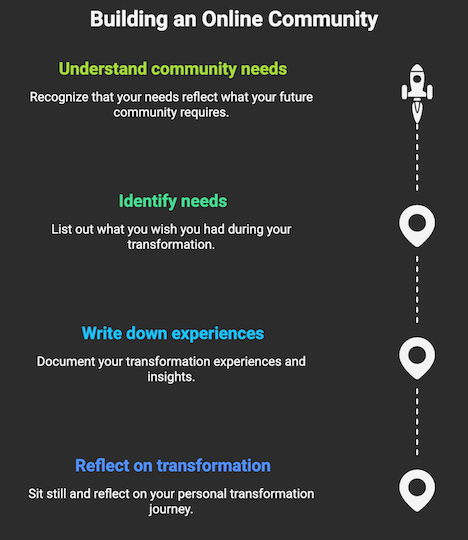
So before you create anything, get still.
Reflect.
Write down what changed you.
List out what you wish you had during that time – what would’ve helped you move faster or feel less alone.
That’s what your future community needs.
That’s where this starts.
Identify the specific problem you help people solve
Now that you’ve reflected on your transformation, it’s time to get specific.
Because people don’t connect with general advice. They connect with clear outcomes.
Think of it this way: Your story is the bridge. But the reason people cross that bridge is because they want to get somewhere.
So, where are you taking them?
Start by asking:
- What’s the core problem I’ve solved in my life?
- Who else might be struggling with that right now?
- What result can I help them achieve?
This is where a simplified version of Ikigai comes in handy.

You’re looking for the overlap between:
- What you’ve lived through
- What you care deeply about
- What people actually want help with
That last part?
That’s where validation comes in.
You might feel tempted to start building a course, a group, or an email list right away. But if no one is resonating with the transformation you’re offering, you’ll waste months (or years).
Start simple.
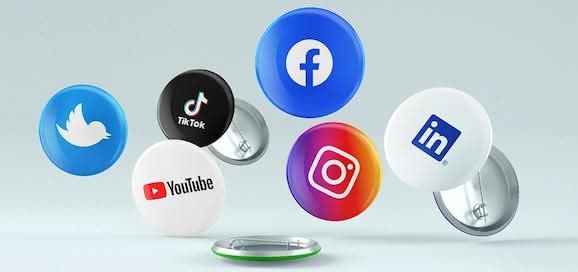
Describe the problem you help solve, and see what happens.
Say it out loud in a short video. Post it on your socials.
You’re not looking for likes.
You’re looking for:
- DMs that say “this is exactly what I needed”
- Comments from people who feel seen
- Shares from others who relate
These are signals.
They tell you: yes, this problem matters.
Forget the “ideal customer avatars” for now. Let your ideal audience organically emerge than you trying to fit them in a niche.
👉 Just focus on one real problem you know how to solve and the kind of person who needs your help. That’s the root of a real community.
Use short-form content to validate your message
Once you’re clear on the problem you help solve, it’s time to test your message.
The easiest way to do that? Short videos.
You don’t need fancy gear or long scripts.
Just pull out your phone, look into the camera, and speak directly to the person you want to help.

- Talk about the problem.
- Share a moment from your journey.
- Explain how things changed for you.
You’re not trying to go viral. You’re trying to see if what you’re saying connects.
Short-form content lets you do this quickly. You can post 3 videos in a week and start seeing patterns fast.

Are people commenting? Are you getting DMs? Did anyone share it?
Those are early signs that your message is resonating.
Use whatever platform you have. Focus on clarity and consistency.
Many creators forget to check for audience feedback. But this response is crucial – it shows whether to continue or pivot your message.
Short-form video is not the end goal. It’s just the test drive.
If people lean in, you know you’re onto something.
You can go deeper from there.
Transition to long-form content to deepen trust
Once people start resonating with your short videos, don’t stop there.
Use that momentum to go deeper.
👉 Long-form content is where you build real trust. It gives people space to hear your full thoughts, understand your approach, and feel a stronger connection with you. Unlike short videos, long-form shows that you’re serious and that you’ve done the work.
You don’t need to become a full-time content creator.
Start small.
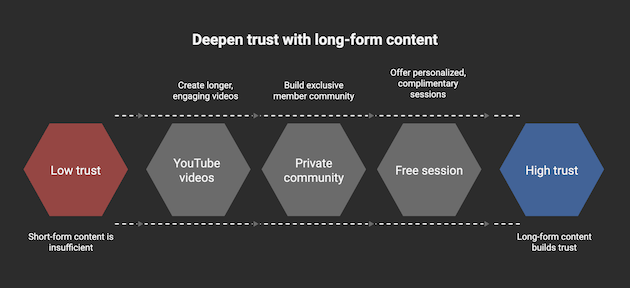
A 10-minute YouTube video or a podcast episode where you break down a key idea is enough.
This helps you filter out people who are just curious from those who are truly ready to commit.
Want to turn these viewers into your community?
Give them a next step.
Invite them into your world. Mention your private community or offer a free session if you’re just starting out.
YouTube, in particular, works well here. It’s one of the best platforms for creating a YouTube sales funnel that moves people from interest to connection. If you’re looking to set this up, check out our post on YouTube sales funnel.
Also, don’t let the idea of making videos slow you down. We covered a full workflow to repurpose YouTube videos into blog posts, so you can get more mileage from every idea.
Over time, long-form content becomes your digital foundation.
It works while you sleep.
But only if it’s based on a message that’s already validated through short-form.
Keep it simple. Go deep. Give people something real to chew on.
Create a private space for your audience to connect

To transform your audience from passive viewers to active participants, you need the right community platform.
Don’t rush to create a community on any platform just because it’s trending.
Consider where your audience already spends time and start there.
Based on our extensive testing of online community platforms, here are our top recommendations:
- Skool – Best for most creators with its excellent gamification features, discovery engine, and affordable pricing ($99/mo). Founded by Sam Ovens and backed by Alex Hormozi, it creates highly engaged communities through points, levels, and leaderboards. Read our full Skool review.
- Kajabi – Ideal for course creators wanting an all-in-one solution ($149/mo). Beyond community features, it offers courses, email marketing, websites, and funnels all in one platform. Read our complete Kajabi review.
- Circle – Best for professional communities requiring robust features ($49/mo). Offers courses, live streaming, and excellent design customization. Explore our Circle review.
👉 While platforms like Teachable and Thinkific excelled with pre-recorded courses, In the age of AI, community-centric coaching is the future. This is the reason why I strongly recommend platforms like Skool and Kajabi leverage gamification and to facilitate peer-to-peer learning and accountability, creating more dynamic, engaging communities.

I personally use Skool, not because it’s trendy, but because it solves a few key problems most others don’t.
- It’s simple to use – both for creators and members
- The community discovery feature allows people to find your group
- There’s a built-in paywall that keeps the quality high (even at $9/mo for creators, it filters out noise)
Compared to other platforms, Skool feels clean and free from distractions. It’s built for real conversations, not endless content that overwhelms you.
If you want to know how to quickly grow your Skool community, check out our blog post with step-by-step tips.
But whether it’s Skool, Circle, or even a private Slack group, the platform isn’t the point.
👉 The goal is to give your people a place. A home where they can ask questions. Share wins. Support each other. And move toward a shared outcome together.
If you skip this step, your audience stays passive. But once they start interacting with each other, something shifts. It’s no longer just your voice. It’s a group moving in the same direction.
That’s what makes a community come alive.
Define a clear path with tangible outcomes

Most communities fall flat after someone joins, I mean, it doesn’t matter even if your community has 10,000+ members.
You’ve probably seen it: someone joins, looks around, maybe watches a video or two… then disappears.
Why? Because there’s no reason to keep showing up.
No “clear” next step. No challenge. No win.
To fix that, your community needs direction.
Start by laying out a roadmap – a simple journey from A to B:
- Where are they now?
- What are they working toward?
- What happens when they get there?
Don’t keep it vague. Make it tangible.
For example, if you’re helping coaches grow their business:
- Level 1 might be validating their niche
- Level 2 could be launching short-form videos
- Level 3 could be building a sales funnel
- Level 4 might unlock a private strategy call with you
This is where platforms like Skool shine.
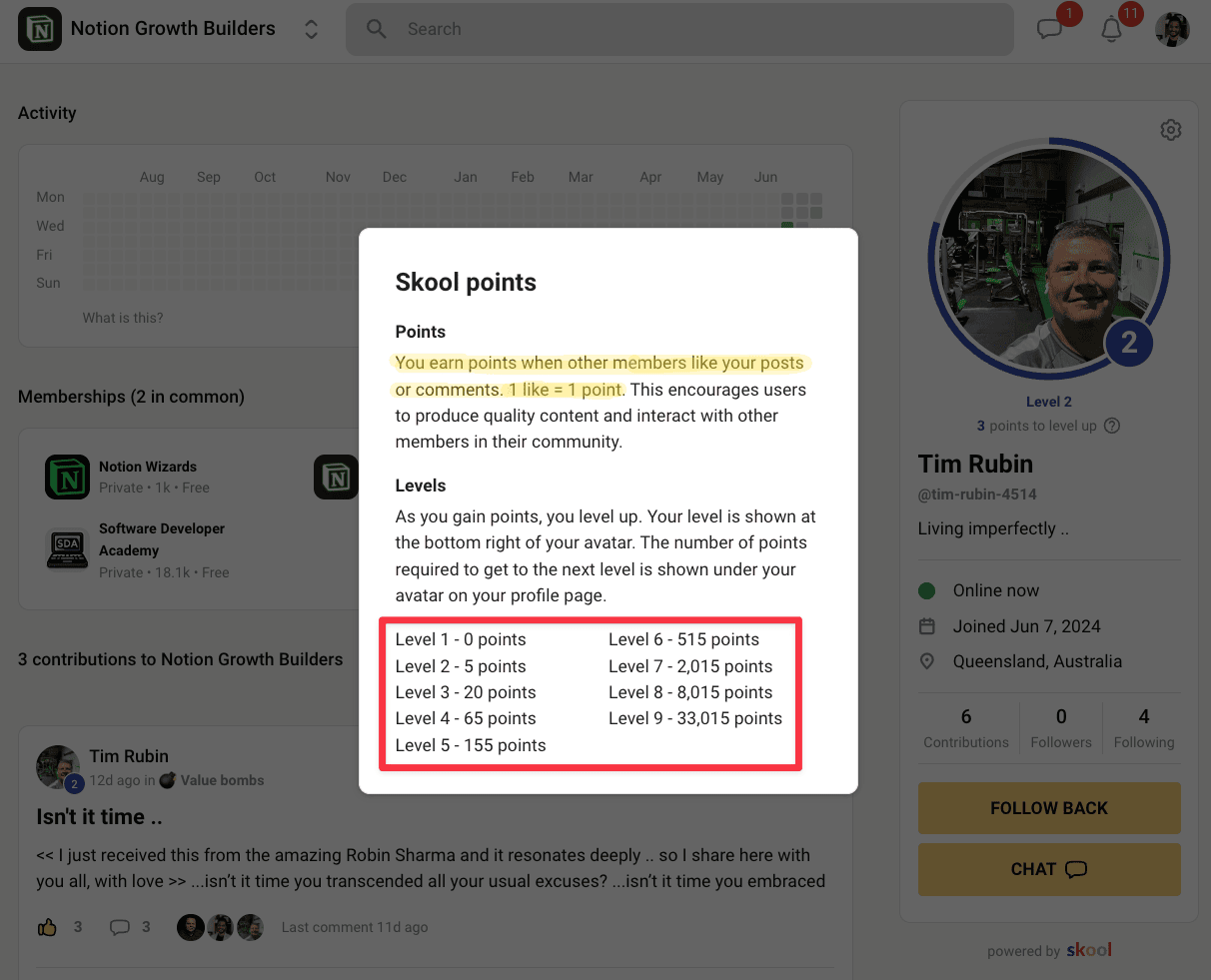
Its built-in gamification – points, levels, and leaderboards can tie directly into these milestones.
You can set real incentives based on meaningful engagement, not just vanity activity.
Want to go deeper on this?
Check out our post on how to implement gamification in eLearning for ideas that work without being gimmicky.
And here’s the important part:
The rewards should matter to your audience.
Don’t just offer digital badges or access to another video. Offer something that helps them move forward – clarity, access, visibility, recognition. That’s what fuels real motivation.
That’s how you turn “just a group” into a movement.
Not through hype. But through design.
A path. A purpose. And a way to win.
Qualify your community and keep it intentional
When you’re starting out, it’s tempting to focus on growing your community as fast as possible. More members, more buzz, more energy right?
But fast growth without intention leads to noise and it kills engagement.
You don’t need more people.
You need the right people, those who are serious about the journey.
One simple way to do this? Qualify every member before they join.

If you’re using a platform like Skool, you can ask new members to answer questions before they’re accepted.
Use this wisely.
Don’t just ask generic stuff like “What do you hope to learn?”
Instead, get specific say like:
- What’s your current challenge right now?
- What transformation are you hoping to achieve?
- On a scale of 1 to 5, how committed are you to showing up consistently?
These kinds of questions do two things:
- They help you understand where people are, so you can serve them better.
- They signal to members that this isn’t just another free-for-all group. There’s intention behind it.
When people take the time to reflect and answer thoughtfully, they’re already more invested. And when you moderate based on those responses, you build a space with energy, purpose, and shared standards.
We’ve also shared more on this in our guide to mastermind groups, where selectivity is highlighted as one of the biggest advantages.
👉 And remember: Exclusivity doesn’t mean being unwelcoming. It means protecting the culture. It means making sure that when someone joins, they feel like, “These are my people.”
Because once that alignment clicks, the community starts to feed itself.
Focus on real transformation over passive consumption
Content doesn’t create community.
Connection does.
If you want people to show up regularly, you have to give them a reason that goes beyond new videos or updates.
Your community should feel like a place where people come to move forward, not just learn.
When members begin to rely on each other, share progress, and hold each other accountable, everything shifts. It becomes less about you, and more about us.
Think of the community like a thread, and your members as beads. The stronger that invisible thread, the more everything stays connected.
So how do you build that thread?
- Create shared rituals: Weekly check-ins, live calls, or reflections.
- Encourage peer-to-peer support: Let them help each other, not just ask you.
- Build accountability: Challenges, streaks, or goals that get tracked.
And yes, track engagement, but don’t stop there.
The deeper metric is relational glue.
How well do members know each other? Do they celebrate each other’s wins? Would they notice if someone went quiet?
This is why having a mobile app matters too.
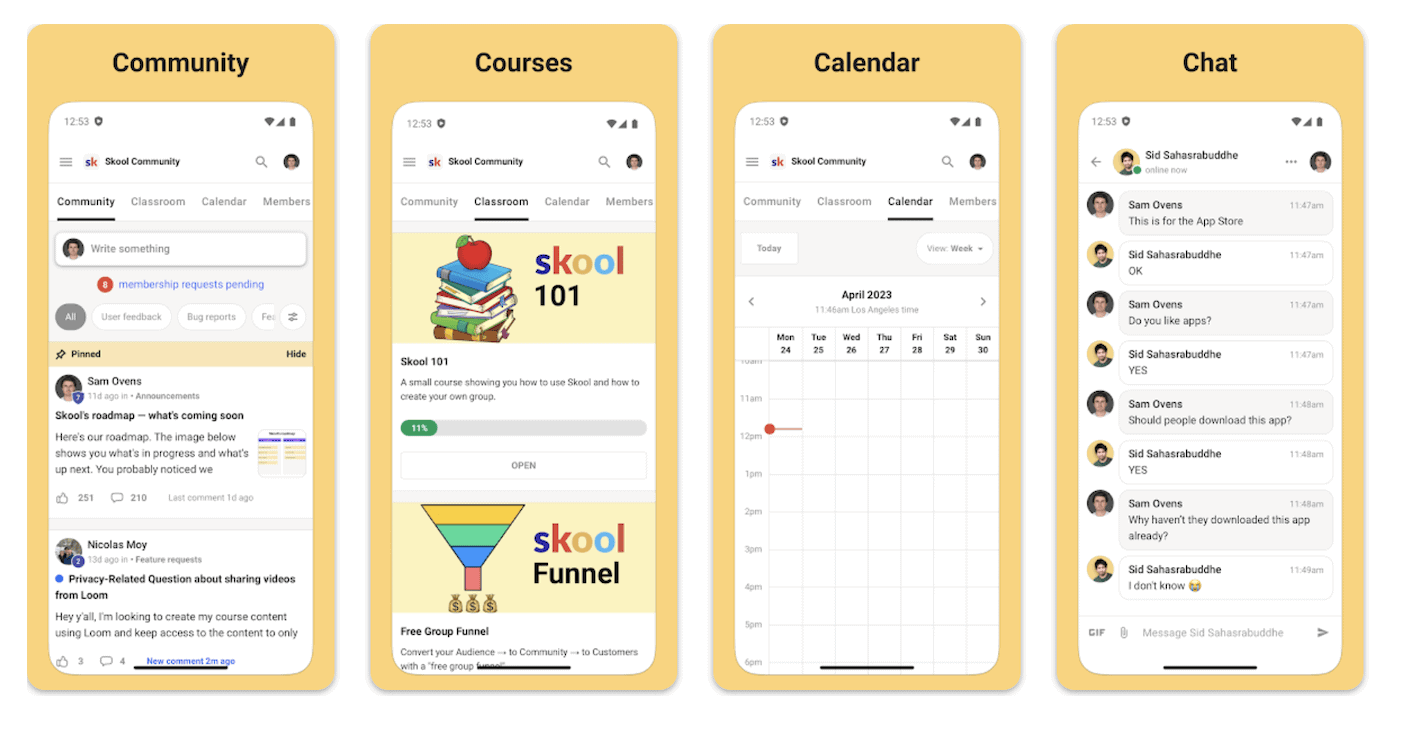
People don’t return for more content. They return for connection, for being seen, and for the progress they feel when they’re part of something alive.
So design your space with that in mind.
Not to impress, but to transform.
Keep iterating based on feedback and outcomes
No community is perfect from day one.
And that’s actually a good thing.
Because when you’re close to your members, when you’re listening, asking, and adjusting, you’re not just building a better group. You’re building a living system.
What you think your people need on day one might be very different from what they actually need three months in.
That’s why the best communities evolve in public.
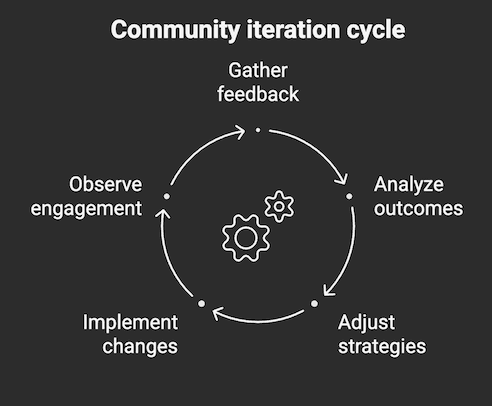
Make feedback loops a part of your rhythm:
- Ask weekly questions inside your group
- Run short polls to test new ideas
- Open space for honest conversations
Not everything needs to be automated or polished. Sometimes the rough, in-progress stuff is what brings people closer because it shows you’re in this with them, not just above them.
Also, watch what content or formats create the most traction. Was it the messy live call that led to breakthroughs? Or the one accountability thread that kept people coming back?
Double down on what’s working. Let go of what isn’t.
If you’re not sure where to start, check out our blog post on how to get high course completion rate.
Many of those ideas work equally well inside communities focused on transformation.
👉 Iteration isn’t about tweaking for perfection. It’s about listening deeply and building in response.
That’s what creates trust and makes people coming back.
Final words
You don’t need a big following to start a meaningful community.
You just need clarity, consistency, and a real reason to gather.
- Start with your transformation.
- Speak to the problem you’ve solved.
- Validate it in public.
- Then create a space where people move forward together.
The best communities aren’t built with hype.
They’re built with care, direction, and shared outcomes.
If you keep showing up, guiding the journey, and listening closely, you’ll go from talking to strangers to leading a movement.







